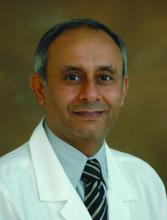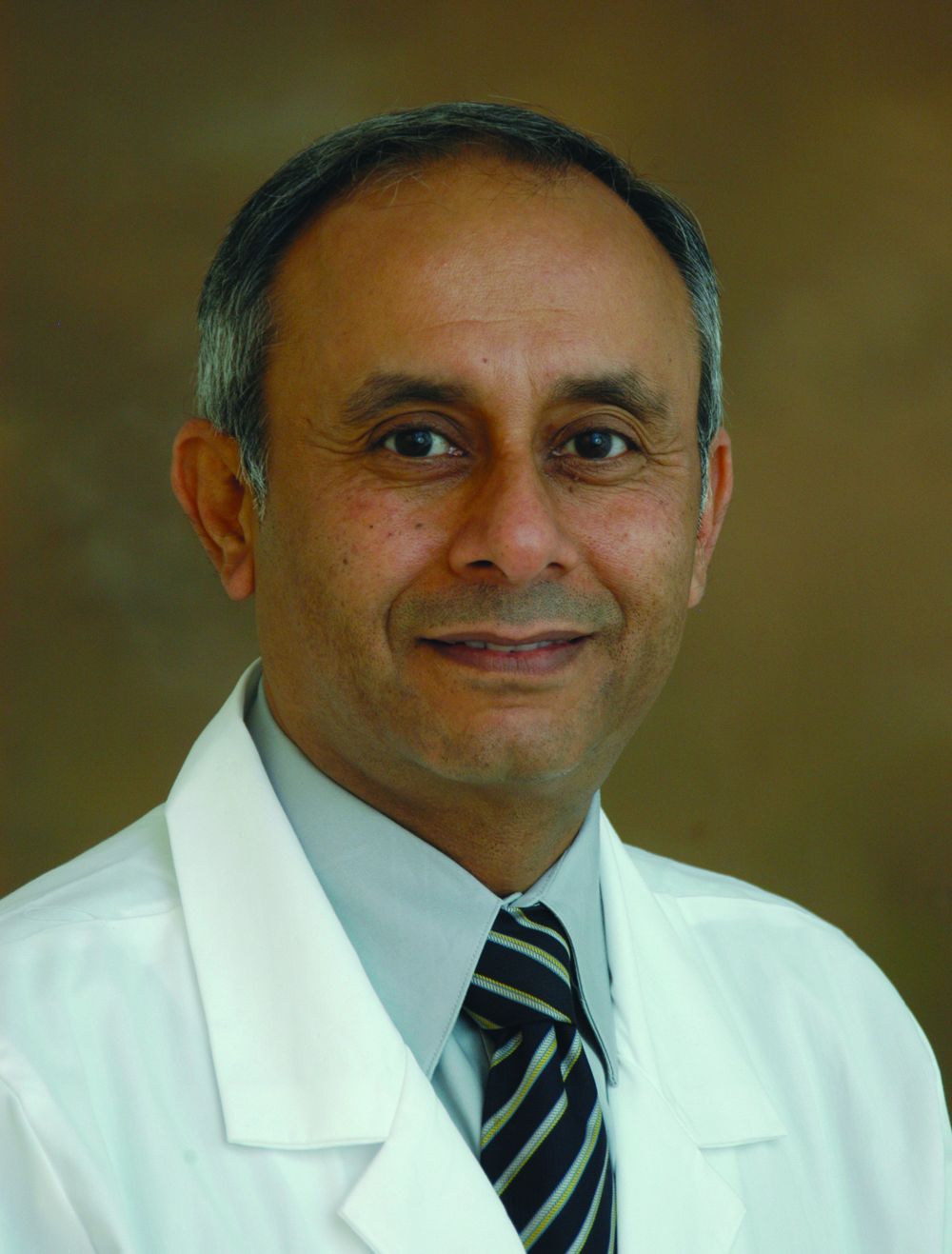User login
Endorses AGA’s Center for GI Innovation and Technology as a place to connect with others.
Although the gastroenterology specialty relies heavily on technology, only incremental advances have been made in this space in the last several decades. “While the potential for innovation is huge, we need to overcome structural and conceptual barriers to realize its true potential,” said Pankaj Jay Pasricha, MD, vice chair of the department of medicine at Johns Hopkins University, Baltimore. Dr. Pasricha will discuss what barriers exist and how to overcome them in his keynote presentation at 2019 AGA Tech Summit, sponsored by the AGA Center for GI Innovation and Technology.
Some barriers are risk aversion, reimbursement challenges, and failure to understand true unmet needs. “We need to find practical solutions that are technologically innovative that can get to market,” he said. The general concepts that Dr. Pasricha talks about will be discussed in detail with specific examples during the summit’s sessions.
When looking to bring innovative ideas to market, Dr. Pasricha recommends learning from individuals who have already done this successfully and from those who have tried and failed. One way to do this is to connect with inventors, entrepreneurs, investors, health care providers and institutions, and regulatory and reimbursement stakeholders through the AGA Center for GI Innovation & Technology (CGIT), which he helped found 10 years ago and served as the center's first chair.
The center supports innovation and developing new technology in gastroenterology, hepatology, nutrition, and obesity by guiding medical device and therapeutics innovators through the technology development and adoption process, according to CGIT’s website. It serves as a key resource for industry and physician innovators developing new technology in gastroenterology, and provides guidance to the Food and Drug Administration and other regulatory groups to expedite the device development process.
“CGIT’s purpose is to provide education on how to identify needs, find solutions, and provide roadmaps for connecting ideas and bringing them to the real world,” Dr. Pasricha said. “We need to create disruptive technologies that will address unmet needs at every level from the average gastroenterologist in practice, to advanced endoscopists, and even advanced surgeons who perform gastroenterology procedures.”
CGIT also provides guidance for bringing new technologies into clinical trials through the creation of registries and other means. You can learn more about the center at www.gastro.org/CGIT.
Regarding recent advances in technologies, Dr. Pasricha said there are now better ways to ablate tissue, do tissue anastomosis, prevent reflux, promote weight loss, and resect locally advanced cancer. “Platform” technologies such as new ways to deliver energy, flexible robotics, and artificial intelligence are also beginning to emerge in our specialty.
Dr. Pasricha is quite experienced in bringing new technologies to market. He holds more than 50 patents that have either been issued or are in process by The United States Patent and Trademark Office and has cofounded several companies within both the medtech/endoscopy and biotech gastroenterology spaces.
His contributions to endoscopy include the use of botulinum toxin for gastroenterology disorders, cryotherapy, novel stents, and the POEM procedure. He is currently working with Galvani Bioelectronics to develop a novel neuromodulation therapy for type 2 diabetes, which has become a worldwide scourge.
Dr. Pasricha discloses being a consultant for several pharmaceutical companies.
Endorses AGA’s Center for GI Innovation and Technology as a place to connect with others.
Endorses AGA’s Center for GI Innovation and Technology as a place to connect with others.
Although the gastroenterology specialty relies heavily on technology, only incremental advances have been made in this space in the last several decades. “While the potential for innovation is huge, we need to overcome structural and conceptual barriers to realize its true potential,” said Pankaj Jay Pasricha, MD, vice chair of the department of medicine at Johns Hopkins University, Baltimore. Dr. Pasricha will discuss what barriers exist and how to overcome them in his keynote presentation at 2019 AGA Tech Summit, sponsored by the AGA Center for GI Innovation and Technology.
Some barriers are risk aversion, reimbursement challenges, and failure to understand true unmet needs. “We need to find practical solutions that are technologically innovative that can get to market,” he said. The general concepts that Dr. Pasricha talks about will be discussed in detail with specific examples during the summit’s sessions.
When looking to bring innovative ideas to market, Dr. Pasricha recommends learning from individuals who have already done this successfully and from those who have tried and failed. One way to do this is to connect with inventors, entrepreneurs, investors, health care providers and institutions, and regulatory and reimbursement stakeholders through the AGA Center for GI Innovation & Technology (CGIT), which he helped found 10 years ago and served as the center's first chair.
The center supports innovation and developing new technology in gastroenterology, hepatology, nutrition, and obesity by guiding medical device and therapeutics innovators through the technology development and adoption process, according to CGIT’s website. It serves as a key resource for industry and physician innovators developing new technology in gastroenterology, and provides guidance to the Food and Drug Administration and other regulatory groups to expedite the device development process.
“CGIT’s purpose is to provide education on how to identify needs, find solutions, and provide roadmaps for connecting ideas and bringing them to the real world,” Dr. Pasricha said. “We need to create disruptive technologies that will address unmet needs at every level from the average gastroenterologist in practice, to advanced endoscopists, and even advanced surgeons who perform gastroenterology procedures.”
CGIT also provides guidance for bringing new technologies into clinical trials through the creation of registries and other means. You can learn more about the center at www.gastro.org/CGIT.
Regarding recent advances in technologies, Dr. Pasricha said there are now better ways to ablate tissue, do tissue anastomosis, prevent reflux, promote weight loss, and resect locally advanced cancer. “Platform” technologies such as new ways to deliver energy, flexible robotics, and artificial intelligence are also beginning to emerge in our specialty.
Dr. Pasricha is quite experienced in bringing new technologies to market. He holds more than 50 patents that have either been issued or are in process by The United States Patent and Trademark Office and has cofounded several companies within both the medtech/endoscopy and biotech gastroenterology spaces.
His contributions to endoscopy include the use of botulinum toxin for gastroenterology disorders, cryotherapy, novel stents, and the POEM procedure. He is currently working with Galvani Bioelectronics to develop a novel neuromodulation therapy for type 2 diabetes, which has become a worldwide scourge.
Dr. Pasricha discloses being a consultant for several pharmaceutical companies.
Although the gastroenterology specialty relies heavily on technology, only incremental advances have been made in this space in the last several decades. “While the potential for innovation is huge, we need to overcome structural and conceptual barriers to realize its true potential,” said Pankaj Jay Pasricha, MD, vice chair of the department of medicine at Johns Hopkins University, Baltimore. Dr. Pasricha will discuss what barriers exist and how to overcome them in his keynote presentation at 2019 AGA Tech Summit, sponsored by the AGA Center for GI Innovation and Technology.
Some barriers are risk aversion, reimbursement challenges, and failure to understand true unmet needs. “We need to find practical solutions that are technologically innovative that can get to market,” he said. The general concepts that Dr. Pasricha talks about will be discussed in detail with specific examples during the summit’s sessions.
When looking to bring innovative ideas to market, Dr. Pasricha recommends learning from individuals who have already done this successfully and from those who have tried and failed. One way to do this is to connect with inventors, entrepreneurs, investors, health care providers and institutions, and regulatory and reimbursement stakeholders through the AGA Center for GI Innovation & Technology (CGIT), which he helped found 10 years ago and served as the center's first chair.
The center supports innovation and developing new technology in gastroenterology, hepatology, nutrition, and obesity by guiding medical device and therapeutics innovators through the technology development and adoption process, according to CGIT’s website. It serves as a key resource for industry and physician innovators developing new technology in gastroenterology, and provides guidance to the Food and Drug Administration and other regulatory groups to expedite the device development process.
“CGIT’s purpose is to provide education on how to identify needs, find solutions, and provide roadmaps for connecting ideas and bringing them to the real world,” Dr. Pasricha said. “We need to create disruptive technologies that will address unmet needs at every level from the average gastroenterologist in practice, to advanced endoscopists, and even advanced surgeons who perform gastroenterology procedures.”
CGIT also provides guidance for bringing new technologies into clinical trials through the creation of registries and other means. You can learn more about the center at www.gastro.org/CGIT.
Regarding recent advances in technologies, Dr. Pasricha said there are now better ways to ablate tissue, do tissue anastomosis, prevent reflux, promote weight loss, and resect locally advanced cancer. “Platform” technologies such as new ways to deliver energy, flexible robotics, and artificial intelligence are also beginning to emerge in our specialty.
Dr. Pasricha is quite experienced in bringing new technologies to market. He holds more than 50 patents that have either been issued or are in process by The United States Patent and Trademark Office and has cofounded several companies within both the medtech/endoscopy and biotech gastroenterology spaces.
His contributions to endoscopy include the use of botulinum toxin for gastroenterology disorders, cryotherapy, novel stents, and the POEM procedure. He is currently working with Galvani Bioelectronics to develop a novel neuromodulation therapy for type 2 diabetes, which has become a worldwide scourge.
Dr. Pasricha discloses being a consultant for several pharmaceutical companies.
FROM THE 2019 AGA TECH SUMMIT

